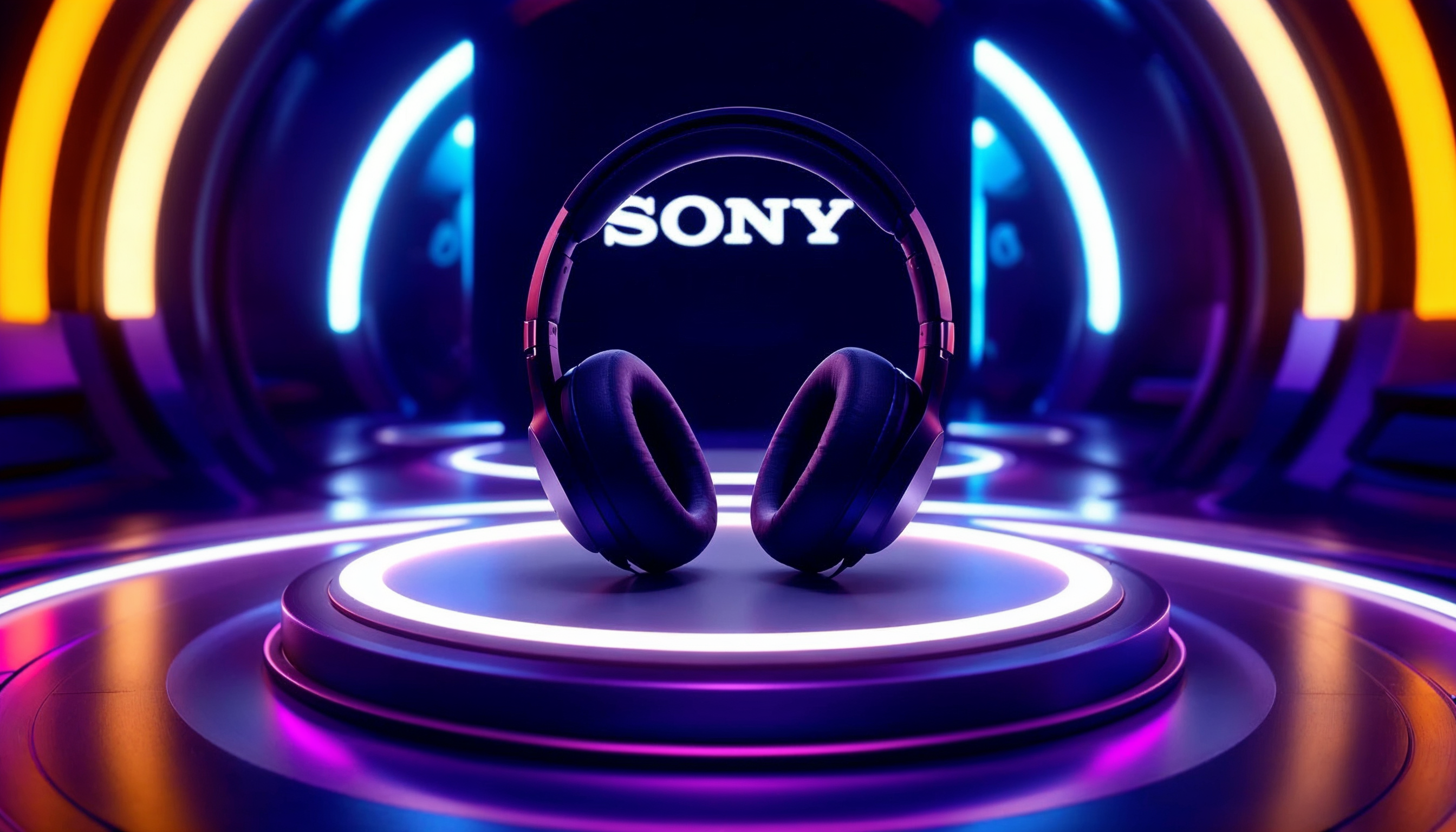In a bold move that is sure to excite audiophiles and tech enthusiasts alike, Sony has announced a groundbreaking partnership aimed at revolutionizing the way we experience sound. The tech giant is teaming up with a leading audio technology company to integrate 3D audio technology into its future headphones. This partnership promises to enhance the audio experience, taking it beyond traditional stereo and surround sound formats, offering users an immersive, spatial listening experience like never before.
What is 3D Audio Technology?
3D audio technology, also referred to as spatial audio, is designed to create a sound experience that closely mirrors how we hear in the real world. Unlike traditional audio systems, where sound is generally limited to left and right channels (stereo) or multiple channels (surround sound), 3D audio expands the soundstage by simulating how sound behaves as it travels through space. This technology aims to make you feel like you’re immersed in the environment, rather than just listening to it.
The fundamental difference between 3D audio and conventional audio systems is the addition of vertical and depth-based sound positioning. In stereo, you only hear sounds coming from the left or right, and in surround sound, audio is placed around you in a circular arrangement. 3D audio takes things further by making sound appear as if it’s coming from all directions: from above, below, and all around. This depth and directionality of sound create a more natural, realistic audio experience.
To achieve this, 3D audio technology relies on complex algorithms and specialized equipment. By processing audio signals in real-time, the technology can place individual sound elements in a three-dimensional space, offering precise control over their positioning. This means sounds like footsteps, gunshots, or background noises can be accurately placed within your auditory field, making the experience more dynamic and engaging.
For example, imagine watching a thrilling action movie with 3D audio. You might hear footsteps creeping up behind you, or the roar of an airplane overhead, giving the sensation that you’re truly in the middle of the action. This creates a fully immersive environment, far beyond the traditional left-right or front-back audio. The result is a richer, more lifelike listening experience that engages the listener’s sense of space and movement in the way we naturally perceive sound in the real world.
The Partnership: A Step Towards the Future of Sound
- Sony, a leader in audio technology, has a rich history, starting with the iconic Walkman and continuing with innovations in sound systems.
- The company has now partnered with a renowned audio technology firm to integrate 3D audio into its headphones, marking a new chapter in the evolution of sound.
- The partnership’s main goal is to create headphones that offer an immersive, next-level listening experience, making audio feel more alive and dynamic than ever before.
- This collaboration is a significant step in pushing the limits of what’s possible with headphone technology, integrating advanced spatial audio techniques.
- The introduction of 3D audio will transform the way users engage with music, movies, and gaming, offering a more realistic and multidimensional sound experience.
- Whether you’re casually listening to music or working as an audio professional, these headphones will deliver top-tier sound quality and immersion, aiming to set a new standard for audio experiences.
How Will 3D Audio Transform the Headphone Experience?
| Aspect | Description | Benefit | Example | Impact on User |
| Immersive Soundscapes | 3D audio creates a sound environment with sounds coming from all directions, beyond left and right. | Full immersion in audio, realistic sound placement | Feeling as though you’re in a concert hall or movie scene. | Makes you feel present in the experience, adding depth. |
| Enhanced Gaming Experience | 3D audio simulates environmental sounds with precision, giving a sense of directionality. | Improved situational awareness and realism | Hearing footsteps from behind or a sniper’s shot from the side. | Enhances gameplay by providing a competitive advantage. |
| High-Fidelity Sound for Music Lovers | Adds layers of sound, making music feel more dynamic and three-dimensional. | Richer, more engaging sound experience | Hearing guitar to the left, drums in front, vocals from above. | Feels like you’re at a live concert with better clarity. |
| Virtual Reality and Augmented Reality Integration | Enhances VR and AR environments by integrating 3D audio for more realism. | Creates more lifelike and immersive experiences | Hearing virtual footsteps or audio cues in AR simulations. | Improves immersion in virtual worlds, making experiences more believable. |
| Overall Audio Experience | Combines all aspects of 3D audio technology to create a comprehensive, immersive sound experience. | Realistic, multidimensional sound | Any media (games, movies, music) becomes fully immersive. | Transforms the way users interact with sound in all forms of media. |
The Technology Behind 3D Audio
One of the core elements of 3D audio technology is the Head-Related Transfer Function (HRTF). This mathematical model mimics the way sound waves reach our ears from various directions. The shape of our head and ears plays a crucial role in how sound interacts with us, and HRTF replicates this process to produce a more realistic audio experience. Essentially, it allows the technology to simulate sounds coming from specific locations around the listener, making it feel as though the sound is truly surrounding them.
Another significant component of 3D audio is binaural audio recording. This technique uses two microphones to capture sound the way our ears naturally hear it. When listened to through headphones, binaural recordings create a sense of depth and directionality, enhancing the 3D effect. When combined with HRTF, binaural audio can dramatically improve spatial accuracy, making the audio feel more immersive and true to life.
Advanced sound processing algorithms are also crucial in the creation of 3D audio. Through Sony’s partnership with an audio technology firm, these algorithms will be developed to ensure that the 3D audio experience is as lifelike and accurate as possible. These algorithms process audio signals in real-time, placing each sound element precisely within the three-dimensional space. As a result, users will experience high-quality, seamless 3D audio without delays or distortions, providing an enjoyable and immersive listening experience.
The combination of HRTF, binaural audio recording, and advanced sound processing algorithms will allow 3D audio to reach new heights of realism and precision. Together, these technologies work to create a rich, multidimensional sound environment that can transform the way we experience audio, whether it’s for music, gaming, movies, or virtual reality.
Sony’s Vision for the Future of Headphones
- Wireless Freedom: Sony plans to ensure that their upcoming 3D audio headphones offer wireless convenience without compromising on sound quality. Users will be able to enjoy high-quality audio without the constraints of wires, using advanced wireless technologies such as Bluetooth 5.0 to ensure a stable connection with minimal latency.
- Noise Cancellation and 3D Audio: Another exciting feature of Sony’s future headphones is the integration of noise cancellation with 3D audio. Sony is well-known for its top-tier noise-canceling technology, and combining it with spatial audio will create a more immersive listening experience. Whether you’re traveling, working in a noisy environment, or relaxing at home, the combination will help you focus solely on the audio, blocking out unwanted distractions.
- Adaptive Sound Control: Sony is exploring adaptive sound control technology, which will automatically adjust the audio experience depending on the surrounding environment. In quieter settings, the headphones will enhance the spatial audio to make it feel more expansive. In noisier environments, the headphones will optimize sound clarity, ensuring that users still enjoy a rich, immersive experience despite external distractions.
Innovative Features of Sony’s 3D Audio Headphones
| Feature | Description | Benefit | Example | Impact on User |
| Wireless Freedom | Advanced wireless technology, including Bluetooth 5.0, for seamless, high-quality audio without wires. | Allows users to enjoy 3D audio without being tethered. | Listening to music or watching movies without the restriction of wires. | Greater freedom to move while enjoying a high-quality audio experience. |
| Noise Cancellation and 3D Audio | Integration of Sony’s industry-leading noise-canceling technology with 3D audio. | Provides an immersive listening experience by blocking out ambient noise. | Enjoying a movie or gaming session without distraction from the environment. | Creates a private, focused audio bubble even in noisy surroundings. |
| Adaptive Sound Control | Technology that adjusts audio settings based on environmental factors. | Optimizes sound for different environments. | In a quiet room, spatial audio is enhanced; in a noisy setting, clarity is prioritized. | Ensures the best listening experience, no matter the surroundings. |
| Real-Time Sound Processing | Advanced algorithms that process audio signals in real-time for accurate sound placement. | Delivers high-quality, precise 3D audio. | Hearing footsteps, environmental sounds, and music elements in a more natural 3D space. | Ensures accurate and immersive audio without delays or distortions. |
| Integration with Smart Devices | Ability to sync with smart devices like smartphones and voice assistants for easy control and connectivity. | Seamless integration with users’ everyday tech. | Controlling music, calls, and more using voice commands or a connected app. | Provides convenience and ease of use for an all-encompassing audio experience. |
The Role of Advanced Audio Technologies in Shaping the Future of Headphones
Sony’s advancements in audio technology are continually pushing the boundaries of what’s possible in personal audio experiences. With the development of their upcoming 3D audio headphones, the company is incorporating features that are designed to enhance both sound quality and user convenience. The combination of wireless connectivity, noise cancellation, adaptive sound control, and real-time sound processing ensures a truly immersive listening experience that adapts to the user’s environment and preferences.
One of the standout features of these headphones is the wireless freedom that eliminates the need for cables, allowing users to move freely while enjoying high-quality sound. This wireless design, likely incorporating Bluetooth 5.0 or other cutting-edge technologies, ensures a stable connection with minimal latency, making it perfect for various applications such as music listening, movie watching, or gaming.
Additionally, the integration of noise cancellation technology ensures that users can enjoy their audio experience without external distractions. Sony’s renowned noise-canceling technology, when paired with 3D audio, creates a more immersive and engaging listening environment. Whether traveling, working, or relaxing at home, the headphones can isolate the user from external noise, making the audio sound more lifelike and focused.
Adaptive sound control is another key aspect of Sony’s vision. This technology allows the headphones to detect and adjust the audio experience based on the environment. In quieter settings, the spatial audio will be enhanced, creating a fuller, more immersive effect. In noisier surroundings, the headphones will prioritize clarity, ensuring users still get a high-quality listening experience despite external noise. These features, working in harmony, will not only improve sound quality but also create a more personalized audio experience for each user.
Revolutionizing the Listening Experience: Sony’s 3D Audio Headphones and Their Key Features
Sony is committed to revolutionizing the audio experience with their upcoming 3D audio headphones, which promise to transform the way users interact with sound. By integrating the latest technologies, Sony aims to deliver audio that not only sounds more immersive but is also customizable to individual needs and environments. These advancements, including wireless functionality, noise cancellation, and adaptive sound control, work together to create a seamless and high-quality listening experience.
- Wireless Connectivity: Say goodbye to tangled cables. With advanced wireless technologies, users will be able to enjoy a high-quality, uninterrupted audio experience without being limited by wires. Bluetooth 5.0 is expected to ensure a stable connection with minimal latency, enhancing the overall experience.
- Noise Cancellation: Sony’s expertise in noise-canceling technology ensures that external sounds are eliminated, allowing users to immerse themselves fully in their audio. Whether in a noisy café, on a plane, or at home, this feature will create a private sound bubble, enhancing every listening session.
- Adaptive Sound Control: The headphones will automatically adjust the audio based on the environment. In quiet spaces, the headphones will boost spatial audio to create an even more immersive effect, while in noisy environments, they will optimize the sound for clarity, ensuring you get the best listening experience wherever you are.
- Real-Time Sound Processing: Advanced algorithms will process audio in real-time, ensuring that sounds are placed accurately within the 3D space. This will provide a more dynamic, lifelike experience, whether you’re listening to music, playing games, or watching movies.
- Seamless Integration with Devices: Sony’s 3D audio headphones will also integrate smoothly with smart devices, allowing for easy control through voice commands or connected apps. Whether you’re adjusting the volume or switching tracks, everything will be within reach without interrupting your experience.













